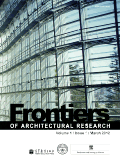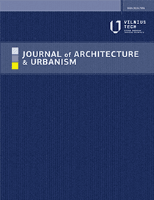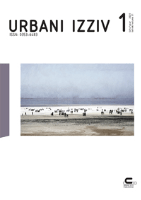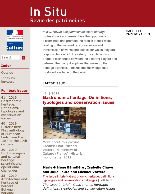
Stoa
Scope & Guideline
Pioneering New Frontiers in Philosophical Research
Introduction
Aims and Scopes
- Interdisciplinary Research:
The journal encourages submissions that integrate diverse disciplines such as sociology, environmental science, and technology into architectural and urban studies. - Sustainability and Urban Development:
A core focus is on sustainable practices in architecture and urban planning, addressing contemporary challenges such as climate change, urbanization, and resource management. - Cultural Heritage and Identity:
Papers often explore the relationship between architecture and cultural heritage, examining how identity and memory shape the built environment. - Innovative Design Methodologies:
The journal emphasizes innovative design approaches, including the use of technology, participatory design, and community involvement in architectural practices. - Education and Pedagogy in Architecture:
There is a consistent focus on the pedagogical aspects of architecture, exploring how teaching methods and curricula can evolve to meet current needs.
Trending and Emerging
- Digital Tools and Virtual Reality:
There is a growing trend towards utilizing digital tools and virtual reality in architectural design and urban planning, reflecting advancements in technology and its applications. - Social Equity and Community Engagement:
Research emphasizing social equity, community involvement, and participatory design processes is on the rise, highlighting the importance of inclusivity in urban development. - Resilience and Adaptive Design:
Emerging themes around resilience in architecture and urban design, particularly in response to climate change and urban challenges, are gaining traction. - Health and Wellbeing in Architectural Design:
A focus on how architectural spaces can enhance health and wellbeing, especially in light of the pandemic, is becoming increasingly prominent. - Intersections of Art and Architecture:
There is an emerging interest in the interplay between art and architecture, exploring how aesthetic considerations can influence design and urban spaces.
Declining or Waning
- Traditional Architectural Styles:
There is a noticeable decline in papers focused solely on historical architectural styles without contextual modern relevance, as contemporary issues gain priority. - Exclusively Technical Studies:
Research that is purely technical, lacking interdisciplinary insights or societal implications, is becoming less common as the journal shifts towards more holistic approaches. - Localism without Global Context:
Papers that address local architectural issues without considering global trends and influences are appearing less frequently, indicating a shift towards more integrative perspectives.
Similar Journals

Open House International
Navigating the Intersection of Architecture and Urban StudiesOpen House International is a distinguished peer-reviewed journal that serves as a vital resource in the fields of Architecture, Urban Studies, and Geography, Planning and Development. Published by Emerald Group Publishing Ltd, the journal circulates valuable insights and research findings that address contemporary challenges and innovations within urban environments. With an impressive 2023 Scopus ranking that places it in the Q2 category in Architecture and Q3 in Geography, Planning and Development, the journal is recognized for contributing significantly to scholarly discourse. Although it follows a traditional access model, the journal's commitment to curating high-quality content remains paramount. As it transitions into a new decade of publishing, from 2007 to 2024, Open House International continues to attract submissions that push the boundaries of knowledge in urban and architectural studies, engaging researchers, professionals, and students alike in the vibrant dialogue on the built environment.

Architecture_MPS is a premier open-access journal published by UCL PRESS, dedicated to exploring the interconnections between architecture, urbanism, and the broader spectrum of social and cultural dynamics. Launched in 2012, this journal stands as a crucial platform for researchers, practitioners, and students alike, facilitating the exchange of innovative ideas and comprehensive scholarship in the field. With its commitment to open access, Architecture_MPS significantly enhances the visibility and accessibility of research, fostering a collaborative environment for academic discourse. The journal covers a diverse array of topics, including theoretical frameworks, policy analysis, and practical case studies, making it an invaluable resource for those engaged in the study and practice of architecture and allied disciplines. As a leading source of contemporary research, Architecture_MPS aims to bridge gaps between academia and practice, encouraging interdisciplinary dialogues that shape the future of architecture and urban studies.

ACE-Architecture City and Environment
Bridging Architecture, Urban Studies, and Environmental InsightsACE-Architecture City and Environment, published by Universitat Politècnica de Catalunya in Spain, serves as an essential repository for innovative research and insights that intersect the fields of architecture, urban studies, and environmental planning. Since its establishment as an Open Access journal in 2006, it has facilitated widespread accessibility to scholarly work, fostering a collaborative and inclusive academic community. The journal has consistently maintained a prominent standing within its field, reflected in its 2023 Quartile rankings—, Q3 in Geography, Planning and Development, and Q2 in Urban Studies. With a publication horizon extending from 2011 to 2024 and an impressive Scopus ranking among peers, it offers a comprehensive platform for researchers to disseminate their findings and engage with contemporary challenges in urban environments. ACE is pivotal for professionals and students alike, striving to shape the future of sustainable architecture and urban planning through rigorous scholarship.

METU Journal of the Faculty of Architecture
Exploring the intersection of theory and practice in architecture.METU Journal of the Faculty of Architecture is a reputable academic publication dedicated to advancing research and discourse in the field of architecture. Published by MIDDLE EAST TECHNICAL UNIVERSITY in Turkey, this journal serves as a vital platform for scholars and practitioners, addressing both theoretical and practical topics relevant to contemporary architectural studies. With an impact factor that positions it in the Q3 category for architecture as of 2023, and a Scopus rank of #133 out of 189 in Engineering Architecture, the METU Journal is an influential resource for innovative ideas and studies. Encompassing a wide range of scholarly articles, it fosters academic collaboration between researchers and professionals, making it essential reading for anyone passionate about the evolution of architecture. Though not open access, it provides crucial insights and rigorous research from 2008 up until 2024, contributing significantly to the global discourse on architectural practices and theories.

Prostor
Connecting Theory and Practice in ArchitectureProstor is an esteemed scholarly journal published by the University of Zagreb, Faculty of Architecture, dedicated to advancing knowledge in the fields of architecture, urban planning, and spatial studies. Since transitioning to an Open Access model in 2006, Prostor has made significant strides in providing unrestricted access to its contents, fostering a vibrant community of researchers, practitioners, and students interested in contemporary issues surrounding the built environment and social space. The journal's commitment to quality is reflected in its impressive rank within Scopus, particularly in the Arts and Humanities category (64th percentile) and within Engineering (Architecture) at the 49th percentile. Covering a broad array of interdisciplinary topics, Prostor serves as a vital platform for disseminating innovative research and fostering dialogue among professionals while engaging with practical and theoretical explorations of spatial design. With coverage spanning over two decades, Prostor remains a crucial resource for anyone seeking to navigate the complexities of architecture and urban studies.

Frontiers of Architectural Research
Connecting Culture, Environment, and Technology in ArchitectureFrontiers of Architectural Research, published by KEAI PUBLISHING LTD, stands at the forefront of interdisciplinary scholarship, addressing contemporary challenges in the fields of architecture, urban studies, building and construction, and archaeology. Since its establishment in 2012, this open-access journal has rapidly gained recognition, achieving prestigious rankings in the 2023 category quartiles, including Q1 placements in both Architecture and Archaeology. With an impressive Scopus rank of #5 out of 354 in Archaeology and #10 out of 189 in Engineering - Architecture, it demonstrates its significant influence and contribution to advancing architectural research. Frontiers of Architectural Research embraces a broad scope that fosters innovative discourse and practical solutions, catering to a diverse audience of researchers, professionals, and students keen on exploring the intersection of culture, environment, and technology. By ensuring immediate access to research findings, the journal not only enhances the visibility of scholarly work but also encourages collaborative dialogues that shape the future of architectural practice.

Techne-Journal of Technology for Architecture and Environment
Bridging Innovation and Sustainability in ArchitectureTechne - Journal of Technology for Architecture and Environment, published by FIRENZE UNIV PRESS, is an important academic platform that bridges the gap between technology and architecture while addressing the evolving environmental challenges of our time. Established in 2015, this journal provides a forum for innovative research and discussions that critically examine the intersections of architecture, urban studies, and construction engineering. With an impact factor indicative of growing recognition in its field, Techne encompasses a broad spectrum of studies, marking its presence in the Q3 and Q4 quartiles across various categories, including Architecture, Building and Construction, Education, and Health (Social Science). The journal is indexed in Scopus with varying ranks, showcasing its increasing relevance and influence among contemporary literature. Although it operates under a non-open access model, the journal ensures that its scholarly contributions are accessible through institutional connections, making it a vital resource for researchers, professionals, and students seeking to advance their knowledge on the integration of technology in shaping sustainable architectural practices.

Journal of Architecture and Urbanism
Fostering Global Collaboration in Urban StudiesThe Journal of Architecture and Urbanism, published by VILNIUS GEDIMINAS TECH UNIV, stands as a pivotal resource for scholars and practitioners in the fields of architecture and urban studies. Since its inception in 2012, the journal has committed to advancing research and discourse on the design, planning, and functionality of urban environments, reflecting a dedicated focus on contemporary challenges in architecture and urbanism. With an impressive open access model implemented since 2018, it ensures that innovative research is accessible to a global audience, fostering collaboration and knowledge exchange. The journal boasts a commendable reputation, categorized in the Q2 quartile for Architecture and Q3 in both Geography, Planning and Development and Urban Studies as of 2023, while maintaining respectable Scopus rankings. Addressing key themes from sustainable design to socio-economic impacts on urban spaces, the journal aims to inspire new models and solutions that meet the evolving needs of growing urban populations. This is a must-read for anyone engaged in the intersection of architecture and urban development.

Urbani Izziv-Urban Challenge
Illuminating Challenges in Urbanization and CultureUrbani Izziv - Urban Challenge, a prominent journal in the field of urban studies and planning, is published by the Urban Planning Institute of the Republic of Slovenia. Established in 1993, this Open Access journal aims to foster the dissemination of cutting-edge research and innovative ideas in architecture, cultural studies, and urban development. With an impressive impact, it holds a Q2 ranking in both Architecture and Cultural Studies, while maintaining a solid presence in Geography, Planning and Development, and Urban Studies categories. As of 2023, it ranks within the top 25% of journals in the Cultural Studies discipline, highlighting its pivotal role in shaping urban discourse. Researchers and practitioners alike will find the journal an invaluable resource for exploring the intertwined challenges of urbanization, cultural evolution, and sustainable development. With an expansive convergence from 1994 to 2024, it continues to attract influential contributions that illuminate the dynamics of urban life in Slovenia and beyond.

In Situ-Revue de Patrimoines
Preserving knowledge, enriching cultural understanding.In Situ-Revue de Patrimoines is a distinguished open-access journal published by the MINISTERE CULTURE & COMMUNICATION, dedicated to advancing the field of heritage studies. Established in 2001, this journal seeks to foster a deeper understanding of cultural heritage through the dissemination of high-quality research articles, reviews, and case studies that reflect the interdisciplinary nature of the discipline. With an ISSN of 1630-7305, In Situ provides scholars, practitioners, and students with invaluable insights into the preservation, management, and interpretation of cultural assets. By offering open access to its content, the journal ensures that vital knowledge in heritage conservation reaches a broad audience, promoting dialogue and collaboration within the global academic community. Situated in the heart of Paris, In Situ serves as an essential resource for those committed to the stewardship of our shared cultural legacy.